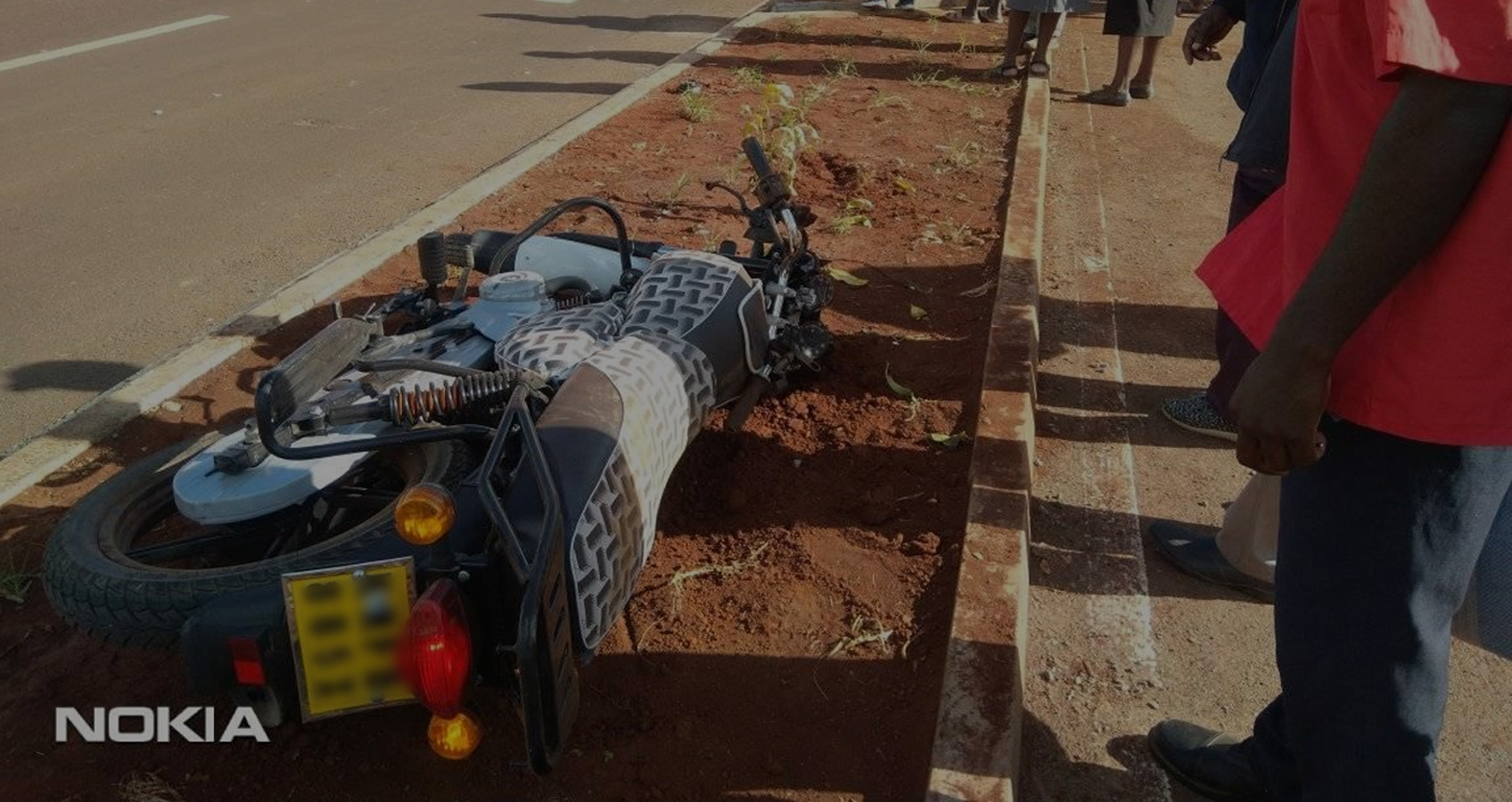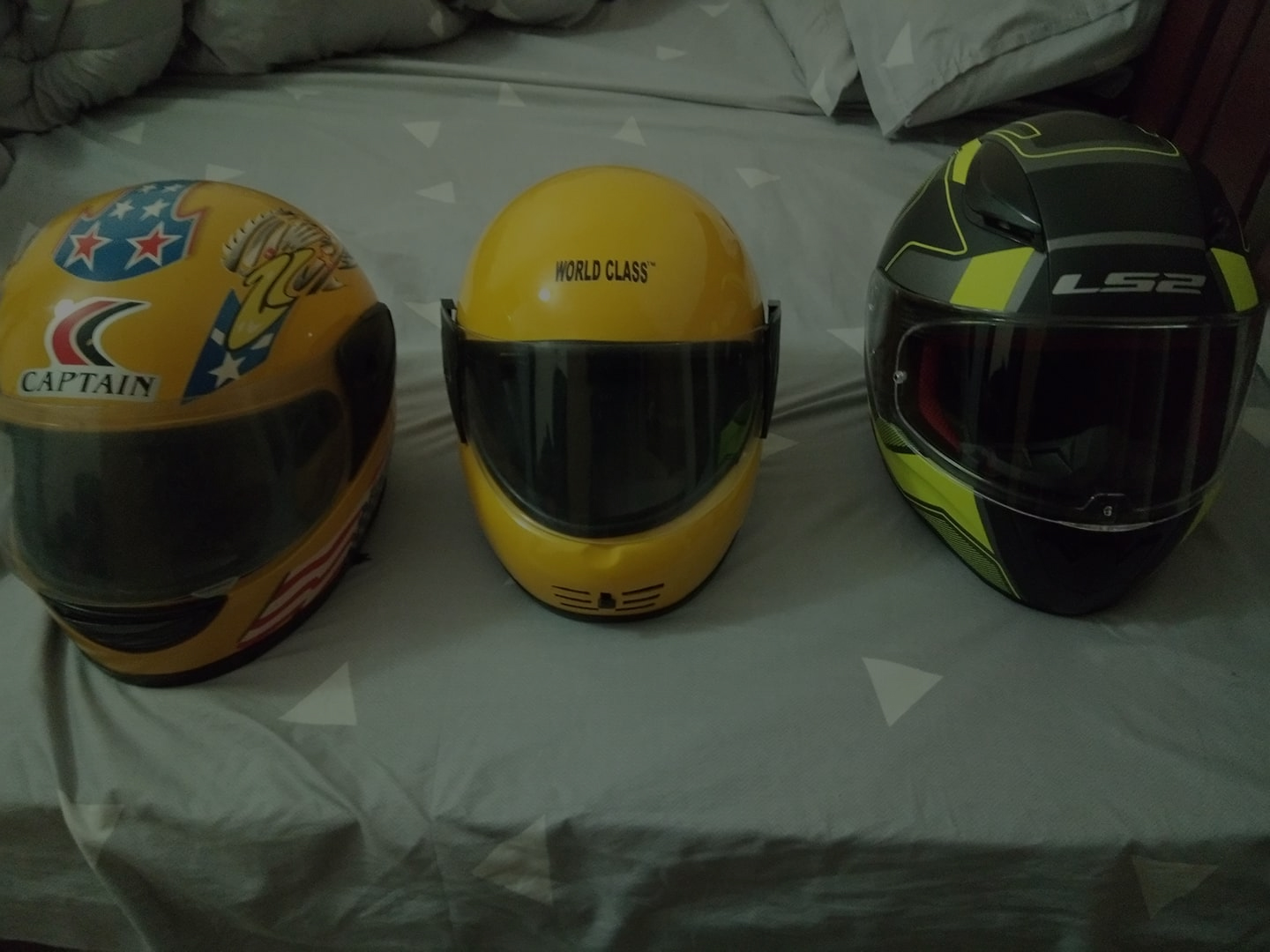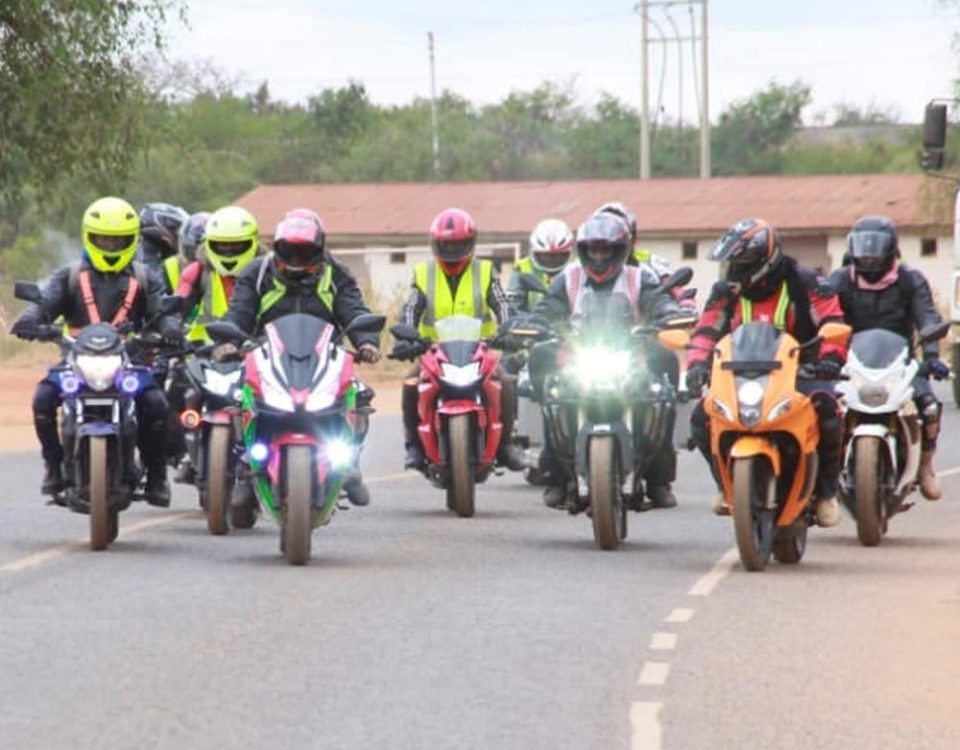
Safety and Gear

Kibo 150 first impressions
12 June 2020
Kibo150, once bitten twice…
21 June 2020By Chora Chora
T here is usually a bit of controversy when it comes to motorcycle safety. Most riders will tell you safety gear is very important but there are a select few who look at motorcycle gear as a sign of weakness or a lack of skills. Talk to anyone who has ever fallen off a bike moving at high speed and they will tell you if the gear they had on helped at all, or, if they wished that they had safety gear on in the first place.
Helmet
This one needs no explanation. A helmet is the bare minimum if you're getting on a motorcycle, no matter how short the ride is... and especially if the ride is short. Call it weird karma, inattentiveness, or just plain bad luck, but it’s usually these short trips that have the highest accident rates.

The point here is, if you want your brain to remain inside your head, a helmet would be a good idea.
Photo by Steve Kamau
Pointy Bits
The second most impacted areas are your hands, feet or joints. Essentially, any part that is sticking out of the bike or will be the first to contact the tarmac should be covered. This is a tricky one because motorcycle accidents, like all accidents, are very dynamic. It could be anything... from a low-side slide, a tank slapper aka death wobble, it could be a cager hit from behind or a head-on crash. All these scenarios would result in the rider being thrown off the bike in different directions.
Since it is our human nature to throw our hands in front of us to break our fall, gloves become the next important safety equipment that you can have in my opinion.
I know this is debatable because, what about elbows, knees and feet? Yes, they all fall under priority pointy (and breakable) bits and should all be accorded the necessary protection. I won’t even try to cover MX riders because they have the oddest accidents thanks to their riding environment... but they are very wary of their safety.
Without even going too far, ask our cycling brothers and sisters and they will tell you the damage one can get from falling off a bicycle that's going approximately 30-40 km an hour. Concussions, broken bones, the works. Then here you are, probably going more than 100 kph on average, so picture what that same fall or impact would do to you.
Breakable Bits
Your chest. This is often the most overlooked body part and it is usually one of the most lethal when hurt. I'm not just talking about getting a chest guard for the sake of impact protection but to also keep your upper body nice and warm. This is essential if you travel long distances and through changing weather conditions. For the daily commuter, especially our lane-splitting brethren, it would be a good idea to have this extra rib cage to cover your actual ribs.
All body parts are breakable and/or scratchable… not forgetting road rashes and grass burns, so if you can leather suit-up, even better.
Photo by Kamau Kiambuthi
Rubber… or Nylon
We are at that period in time when biking becomes a little difficult for most. The cold, the rain, the increasing frequency of accidents on our highways… all make riding very challenging. The one thing that you need on your side at this time, is trust in your tires.
If your heart skips a beat the moment it starts to rain, it may be time to change your tires (or get rain gear). If like me you cannot lean more than 10 degrees on a corner after a drizzle, it might be time to change your tires. If every time you brake you have to say a quick prayer because you're dancing left and right, hoping that by the time that you stop you are still upright, it might be time to change your tires.
This is a huge topic that we cannot get into right now, but the quality of your tires, their manufacturing date, and their recommended road surface need to be considered. That along with the tire pressure, tread pattern and wear & tear. Pay attention to your tires and you will have avoided at least 50% of the problems that lead to road accidents.
State of Mind
This is another broad topic because it covers both the rider's skill level and the actual state of mind when they are riding. This could be riding under the influence of alcohol or simply riding when experiencing extreme emotions. This last part doesn't make sense... until you get into an accident because you are too excited to go and do something or meet someone and you never get there. You've heard it time and time again... motorcycling is not inherently dangerous but it is extremely unforgiving of inattentiveness. Try and remember how attentive you are when you're extremely happy or sad. Not very, should be the answer. These are the times that you should ride slow for your own good.
If you have been to any of the major highways or bypasses, especially Mombasa Rd, Waiyaki Way, or the Eastern bypass, you know very well how cagers and truckers don't give a s*** about you. They will see you coming from a kilometer away and still run you off the road while flashing their headlights. You have to choose to either be on the right and die with your rightness, or you can choose to be right, move out of the way and survive to fight another day. There's no need to be right and dead.
There is, however, a need to address the daily issues that we face as riders vs cagers, but without forgetting that as riders, we have the same road rules to follow. I try to reconcile the fact that not every cager is intent on hurting motorcycle riders, but you can guess how many angry people are out there because of their scratched side mirrors and bumpers. If there ever will be a peace deal between us and cagers, we would need to address the irresponsible overlapping that leaves scratches and dents. The lot of you who cage and ride know exactly what I mean. Cagers would also need to address their lack of use of indicators and their lack of road intersection etiquette.
Riding under the influence doesn't need any explanation, only a statement. Play silly games, win silly prizes!
The last point I’ll address is rider training
It is not only usual, but the norm in Kenya for riders to get trained either by a friend, the neighborhood boda-boda guy or by braving it and teaching themselves. These are usually the most accessible means of training and they’re all good starting points, but it is not the best option to simply take these beginner lessons and assume that you are completely ready to deal with Kenyan roads. I bet most of you who have been carried by a reckless boda-boda rider have complained and if you didn't get off at the next stop you definitely told the guy to slow down because it was clear they did not know what they were doing... and every second you were on their bike felt unsafe. On the flip side, if you have ever been carried by someone who knew what they were doing, you feel safe always... even in a fast corner when leaning close to the tarmac.
There are many things to consider while on the road, a few of them being; your visibility, speed - in relation to other road users, weather conditions, low & high pressure zones when overtaking, different road surfaces, etc. Experience is key but the right information also matters, so do your research, train on less busy roads whenever you can, and join an advanced rider training school if possible because a month of advanced training might just save you from a lifetime of self-inflicted disability.








